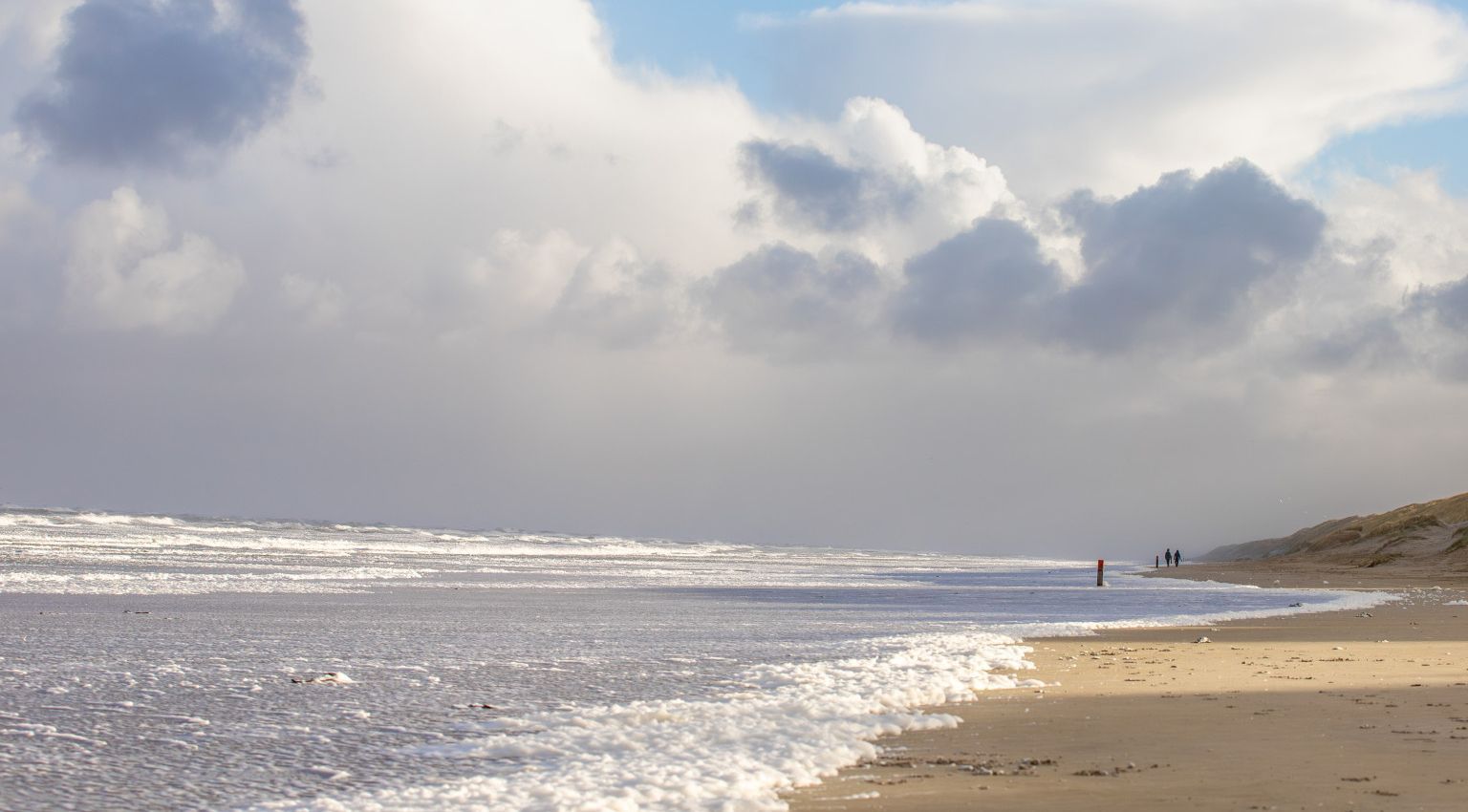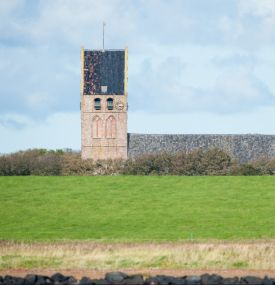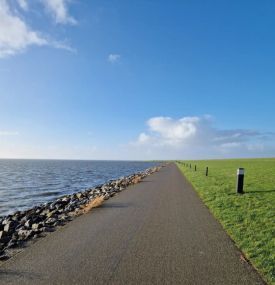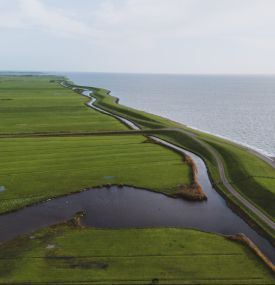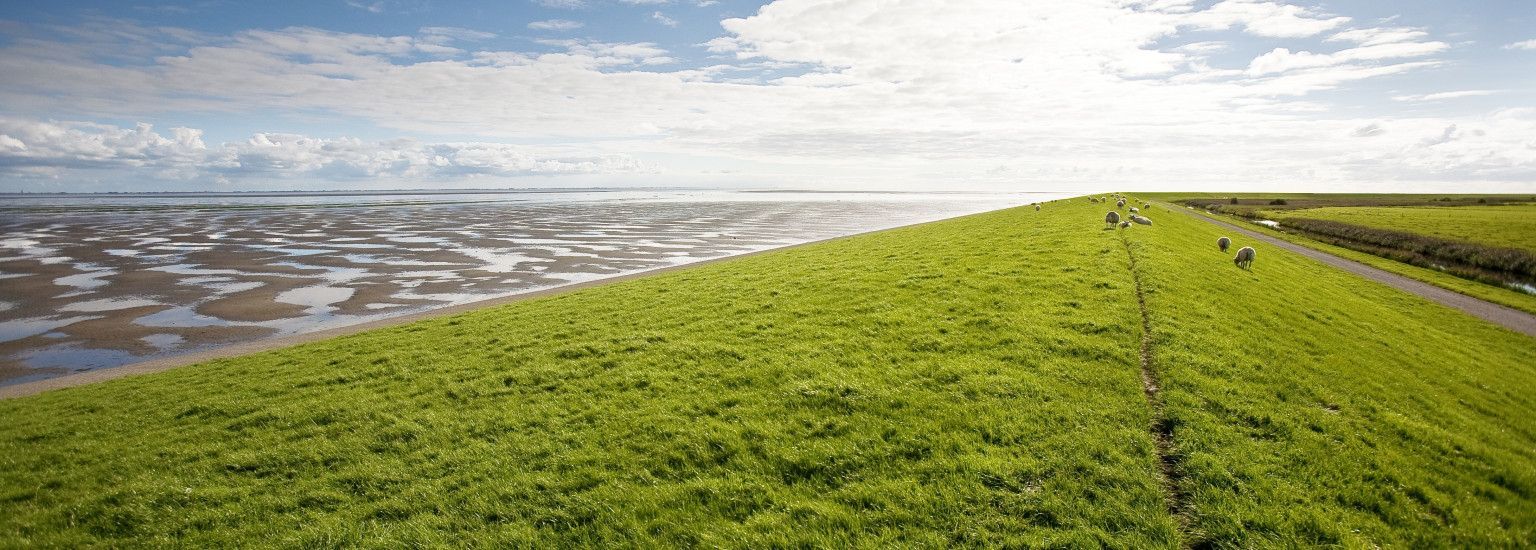
The Storm Surge of 1825
On 3 February 1825, the Netherlands was struck by one of the greatest natural disasters of the 19th century: the storm surge of 1825.
A combination of a severe north-westerly storm and a spring tide caused dike breaches in more than 65 locations, flooding large parts of the country, including Friesland and Ameland. This disaster resulted in hundreds of casualties and immense material damage.
The disaster on Ameland
On the morning of 3 February 1825, a powerful west-north-westerly storm arose on Ameland, increasing in strength throughout the day. By the evening, the water was already pushing against the outer dunes, and around seven o’clock in the evening, the dikes breached in multiple locations. Near Hollum, the dike tore open in two places, and in the Oostermieden in three. The waves in the Westermieden were so high that it seemed as if the North Sea had completely taken over the land. In the village of Hollum, residents could no longer cross the Oosterlaan due to the high water, and near the present-day Sorgdrager Cultural History Museum, the water reached ankle height.
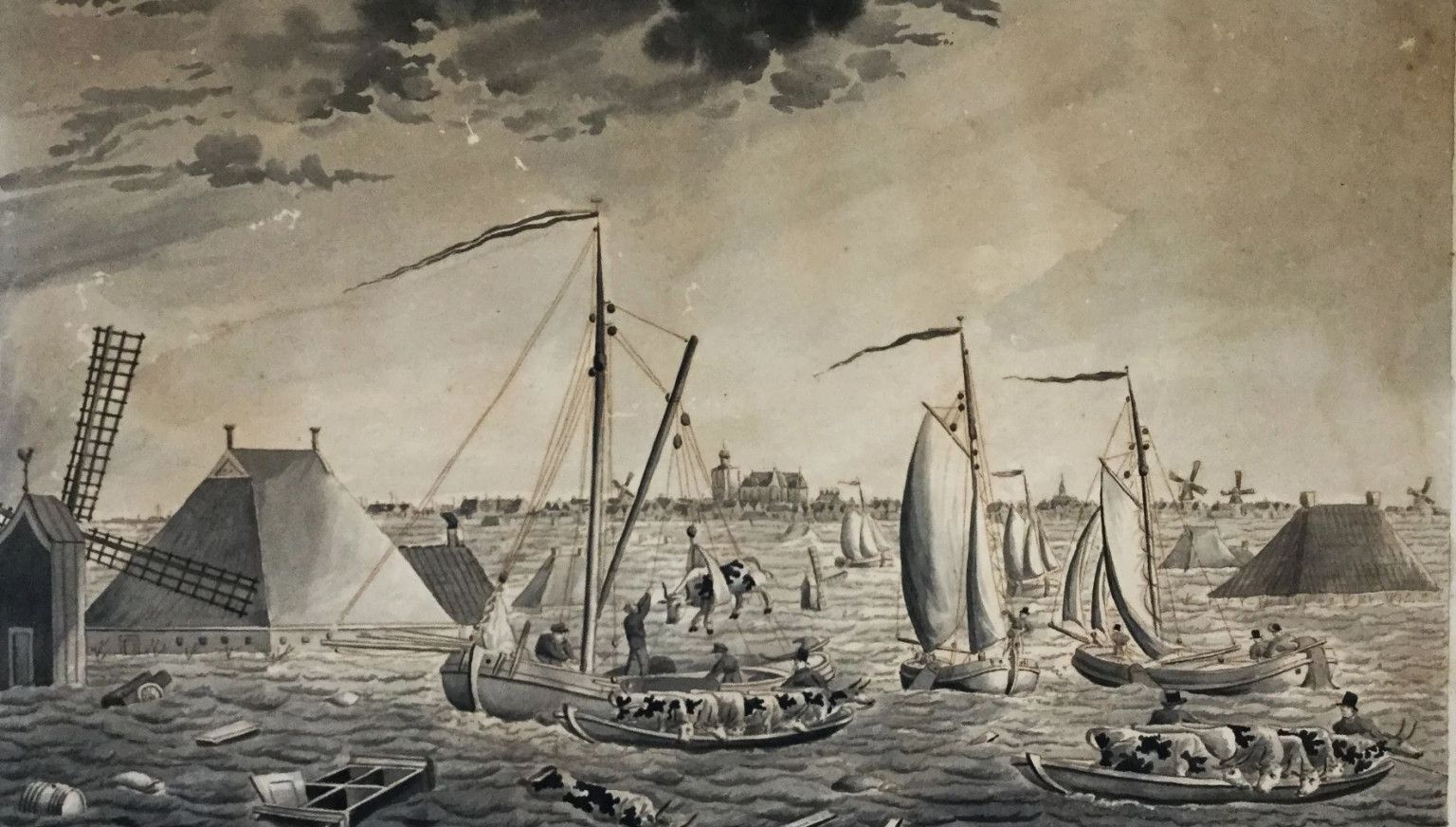
Farmers desperately tried to bring their livestock to safety. They waded through the ice-cold water, sometimes up to their waists, to rescue the animals from the stables and move them to higher ground. Many rainwater wells were contaminated with salt water, and cellars were flooded. That night, the water level gradually receded, but the storm continued.
Image: Fries Scheepvaart Museum
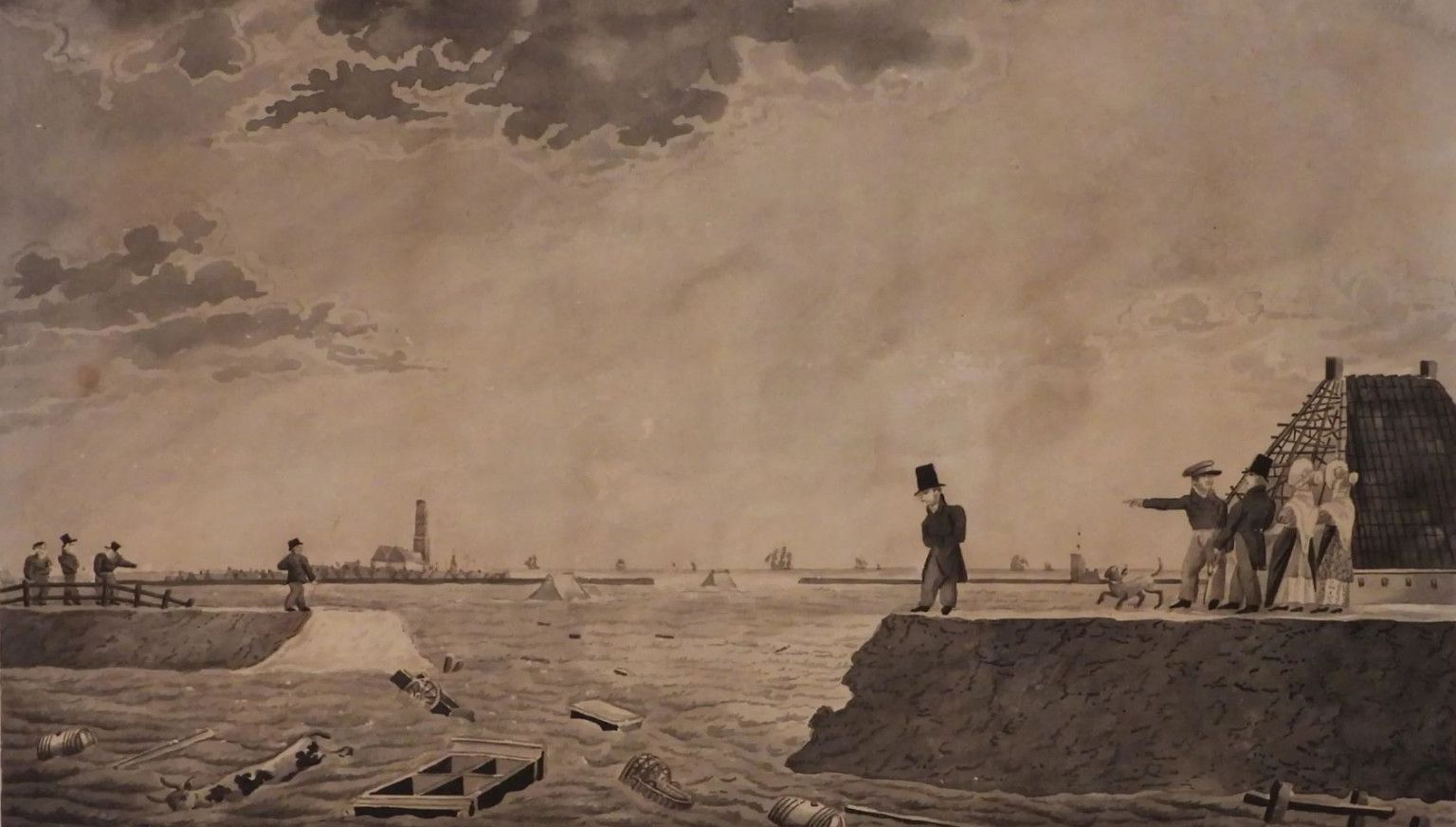
The next day, the water rose again, though slightly less high than the previous evening, accompanied by snow, hail, and rain. It was only on Saturday evening that the storm began to lose strength, allowing the residents to see the full extent of the devastation.
Image: Warkums Erfskip
More than just a natural disaster
The dikes of Hollum, Ballum, Nes, and Buren were swept away in multiple places, creating deep scour holes, some up to four metres deep. Hayfields and farmland were covered with a thick layer of dune and sea sand, rendering the fertile soil unusable. In total, twelve houses were completely destroyed, and 43 homes suffered severe damage. The losses of grain, hay, and livestock – including sheep and a horse – were estimated at nearly 15,000 guilders. To this day, traces of the disaster can still be seen on the eastern side of Ameland. The salinised soils there serve as a reminder of the sea’s devastating power in 1825.
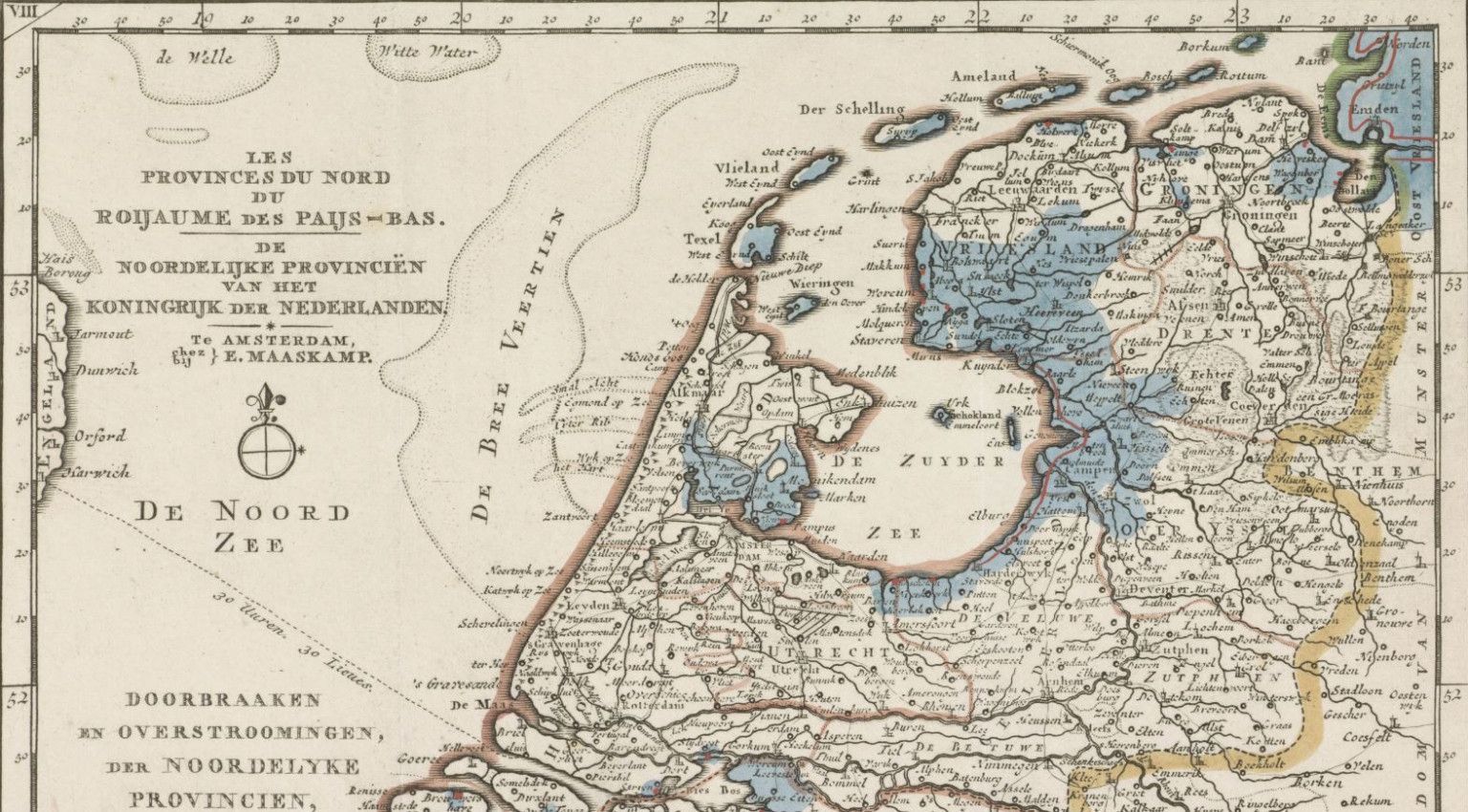
Dike reinforcement
After the disaster, it became clear that the island’s protection needed to be improved. Plans for dike reinforcement were made, but the community’s limited financial resources delayed the process. Nevertheless, this disaster marked a turning point in the approach to water management, leading to significant improvements in infrastructure.
From sod dike to sea dike
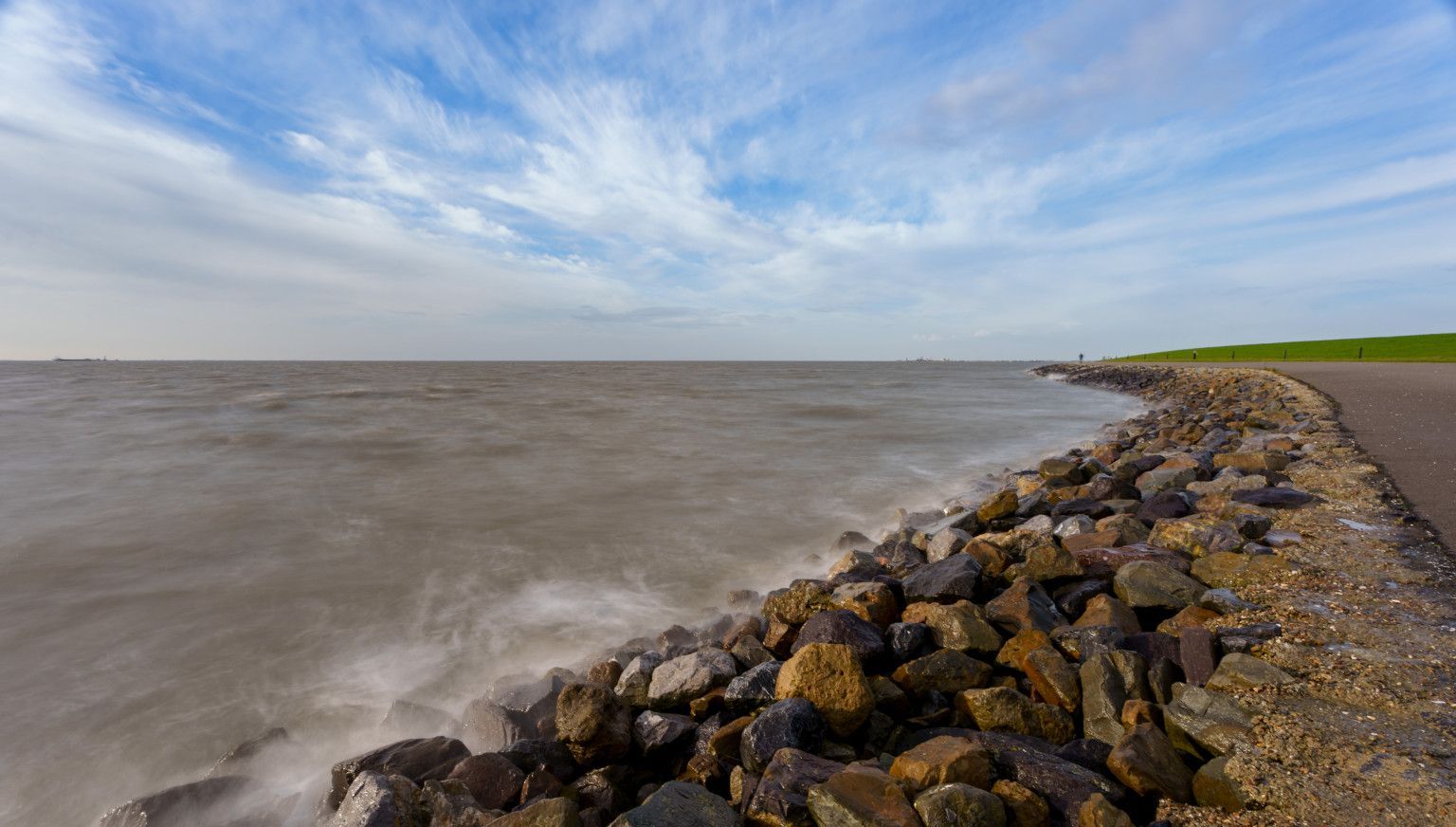
The "Hoge Diek"
The construction of sea dikes around Ameland was a process full of challenges. In 1913, a dike was built around Hollum and Ballum, financed by the water board De Grieën. Since Nes and Buren were either unwilling or unable to contribute to the costs at the time, the dike curved northwards east of Ballum, leaving the villages of Nes and Buren without direct protection.
This is still visible today in the elevated Verbindingsweg between Nes and Ballum, or, as the people of Ameland call this rise, "the Hoge Diek."
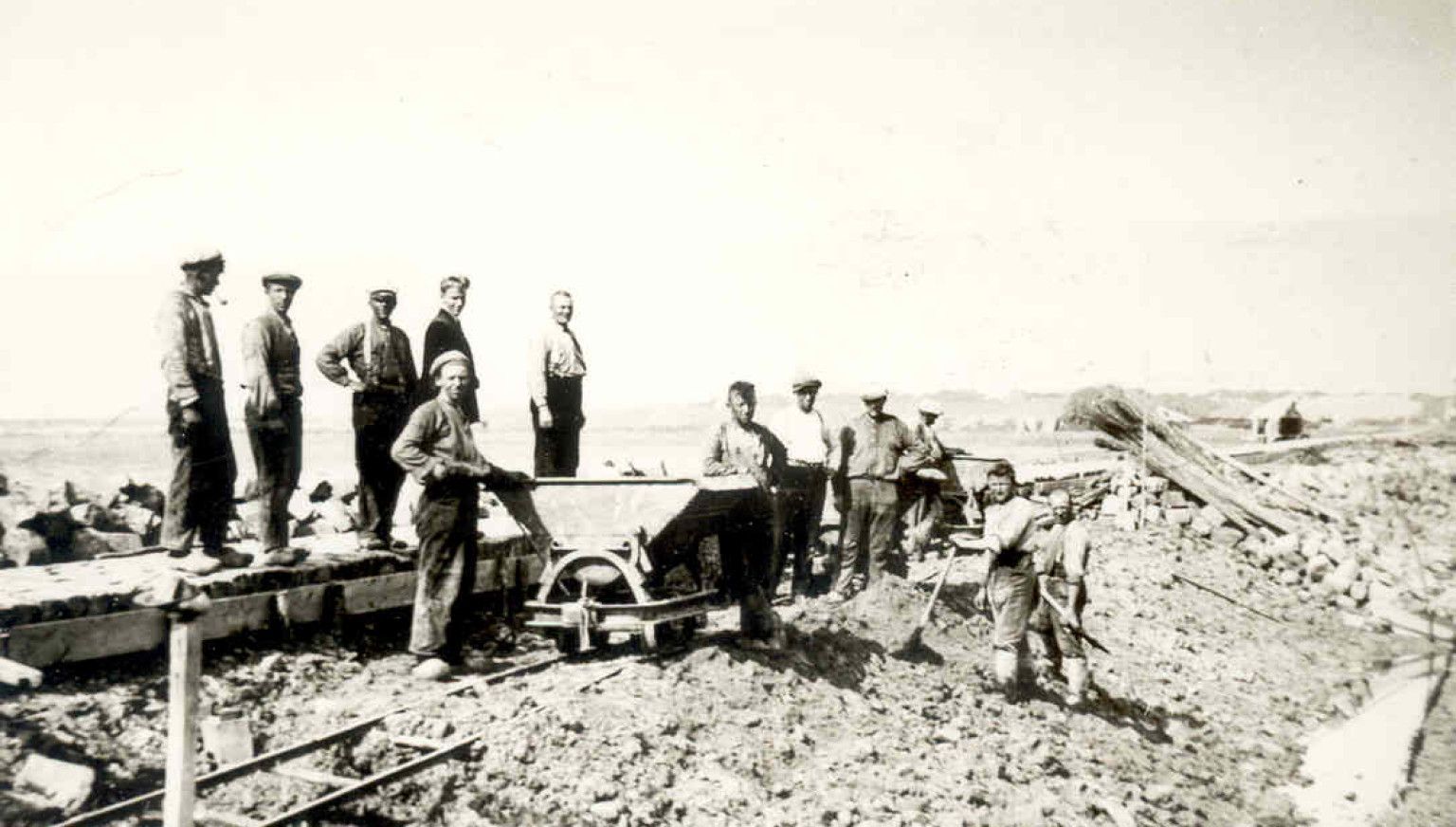
Nes-Buren
It was not until 1926 that the water board Nes-Buren was established under the leadership of the Provincial Council of Friesland, leading to the construction of a dike in 1929 to protect these villages as well. The old sod dikes, which had long served as a temporary barrier against the water, lost their function and were dismantled.
Between the pier and the village of Nes (just past the roundabout towards Nes), a small remnant of a sod dike can still be found.
Photo: Amelander Historie
200 years later
Now, almost 200 years later, we reflect on this significant event. Through exhibitions, lectures, and other activities, museums, churches, and associations are bringing the stories of this disaster back to life this year. By remembering this history, we honour the victims of the past and raise awareness of the importance of water management and the ongoing battle against the water that defines the Netherlands.
All sources are available in Dutch only.
All sources are available in Dutch only.
